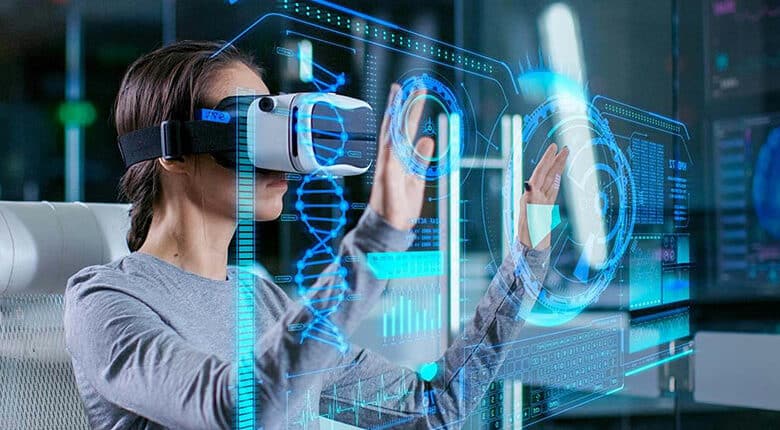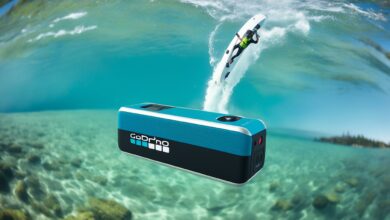Exploring the Features of Virtual Reality Headsets

Virtual reality (VR) technology has rapidly advanced over the years, offering immersive experiences that transport users to virtual worlds. The development of virtual reality headsets has been a significant driving force behind this revolution. In this article, we will explore the features of virtual reality headsets, their applications, and the future of this exciting technology.
Virtual reality is a simulated experience that can be similar to or completely different from the real world. It creates an artificial environment using computer-generated content and sensory information, such as visuals, sounds, and even haptic feedback, to immerse users in a digital realm. Virtual reality headsets are the primary devices that enable users to experience these virtual environments.
What is Virtual Reality?
Virtual reality is a technology that allows users to interact with a computer-generated environment in a way that feels real. By wearing a virtual reality headset, users can step into a 3D world and explore, manipulate objects, and interact with the virtual environment. It provides a sense of presence, making users feel like they are physically present in the virtual world.
Evolution of Virtual Reality Headsets
Early VR Headsets
The concept of virtual reality dates back several decades, but early attempts at creating VR headsets were limited by technology. These early headsets were bulky, had low-resolution displays, and lacked advanced tracking systems. They were primarily used for research and industrial applications.
Modern VR Headsets
In recent years, advancements in technology have led to the development of modern virtual reality headsets that offer a truly immersive experience. These headsets are lightweight, comfortable to wear, and come with high-resolution displays and advanced tracking systems. They provide a wide field of view, minimizing motion sickness and enhancing the sense of presence.
Key Features of Virtual Reality Headsets
Virtual reality headsets incorporate several features that contribute to the overall experience. Let’s explore some of the key features in detail:
Display Resolution and Field of View
High display resolution is essential for a realistic and immersive virtual reality experience. Modern VR headsets offer high-resolution displays that minimize the screen-door effect and provide sharp visuals. The field of view, or the extent of the virtual world visible to the user, also plays a crucial role in creating a sense of immersion.
Tracking System
Accurate tracking is crucial for a seamless virtual reality experience. VR headsets employ various tracking systems, such as inside-out tracking or external sensors, to track the user’s movement in real-time. This enables users to move around freely in the virtual environment and interact with objects.
Audio and Sound Quality
Sound is an integral part of virtual reality, as it enhances the overall immersion. Virtual reality headsets come equipped with built-in headphones or audio systems that provide spatial audio, simulating sounds from different directions. This adds depth to the virtual environment and makes the experience more realistic.
Comfort and Ergonomics
Wearing a VR headset for an extended period should be comfortable. Modern headsets are designed with ergonomic considerations, featuring adjustable straps, cushioning, and lightweight materials. Comfortable headsets ensure that users can enjoy longer sessions without discomfort.
Connectivity Options
Virtual reality headsets require a connection to a computer or gaming console to deliver the virtual experience. They offer various connectivity options, such as wired connections or wireless connectivity, depending on the model. Wireless VR headsets provide more freedom of movement and eliminate the hassle of cables.
Controllers and Input Methods
To interact with the virtual environment, VR headsets come with controllers or input devices. These can be handheld controllers, gesture recognition systems, or even hand tracking. The controllers allow users to manipulate objects, navigate menus, and interact with the virtual world intuitively.
Content and Applications
The availability of diverse content and applications is vital for the success of virtual reality headsets. From gaming and entertainment to education and training, virtual reality offers a wide range of applications. Developers and content creators continue to explore new ways to leverage the potential of virtual reality in various industries.
Recommend : Best Smart Home Devices
Popular Virtual Reality Headsets in the Market
Several virtual reality headsets have gained popularity among consumers. Let’s take a look at some of the leading options available:
Oculus Rift
The Oculus Rift is one of the most well-known virtual reality headsets. Developed by Oculus VR, it offers a high-resolution display, advanced tracking, and a vast library of games and experiences.
HTC Vive
The HTC Vive is a top-tier virtual reality headset that provides an immersive experience. It features room-scale tracking, intuitive controllers, and a broad range of compatible games and applications.
PlayStation VR
Designed for the PlayStation gaming console, PlayStation VR offers an accessible and affordable virtual reality experience. It integrates with the PlayStation ecosystem and provides a range of gaming and entertainment options.
Samsung Gear VR
The Samsung Gear VR is a mobile virtual reality headset that works in conjunction with select Samsung smartphones. It offers a portable VR experience and provides access to a variety of apps and content.
Google Cardboard
Google Cardboard is an entry-level virtual reality headset that utilizes a smartphone as the display. It offers an affordable way to experience virtual reality and has a vast library of Cardboard-compatible apps.
Applications of Virtual Reality Headsets
Virtual reality headsets find applications across various industries. Let’s explore some of the common uses of VR technology:
Gaming and Entertainment
Gaming is one of the primary applications of virtual reality headsets. VR gaming provides an immersive and interactive experience, allowing players to step into the game world and engage with the environment.
Education and Training
Virtual reality has immense potential in education and training. It enables realistic simulations, virtual field trips, and interactive learning experiences, making complex subjects more engaging and accessible.
Healthcare and Therapy
Virtual reality is increasingly being used in healthcare for training medical professionals, pain management, and therapeutic interventions. It offers immersive environments for relaxation, distraction, and rehabilitation.
Architecture and Design
Architects and designers can utilize virtual reality to visualize and present their projects. VR allows clients to experience virtual walkthroughs of buildings, enabling better understanding and decision-making.
Travel and Tourism
Virtual reality enables virtual tours and immersive experiences of travel destinations. Users can explore landmarks, museums, and even remote locations, providing a glimpse of places they may not be able to visit physically.
Challenges and Limitations of Virtual Reality Headsets
While virtual reality headsets offer exciting possibilities, they also come with certain challenges and limitations:
Motion Sickness and Discomfort
Some users may experience motion sickness or discomfort when using virtual reality headsets. This can be attributed to the disparity between visual and physical movements. However, advancements in technology aim to minimize these issues.
High Cost
Virtual reality headsets can be expensive, especially high-end models. The cost of the headset itself, along with the necessary hardware, can be a significant investment for users.
Limited Content Availability
Although the range of virtual reality content is expanding, it is still relatively limited compared to traditional gaming and entertainment options. However, as the technology continues to evolve, more content is being developed.
Social Isolation
Virtual reality can provide immersive experiences, but it can also isolate users from the physical world and social interactions. Striking a balance between virtual experiences and real-world connections is crucial.
The Future of Virtual Reality Headsets
The future of virtual reality headsets looks promising. As technology continues to advance, we can expect even more impressive features and improvements. Some anticipated developments include higher display resolutions, wireless and standalone headsets, and enhanced haptic feedback. Virtual reality will likely become more accessible and integrated into our daily lives.
Conclusion
Virtual reality headsets have revolutionized the way we experience digital content and interact with virtual environments. With their advanced features, immersive experiences, and diverse applications, VR headsets continue to shape various industries. As technology progresses, we can anticipate even more incredible advancements in virtual reality, making it an exciting field to watch.
FAQs
Q: What is the difference between virtual reality and augmented reality?
- Virtual reality (VR) creates a fully immersive, computer-generated environment, while augmented reality (AR) overlays digital content onto the real world.
Q: Can virtual reality headsets be used by people with glasses?
- Many virtual reality headsets accommodate glasses by providing enough space for users to wear them comfortably. Some headsets even offer prescription lens inserts.
Q: How does virtual reality affect the brain?
- Virtual reality can impact the brain by stimulating the senses and creating a sense of presence. It can trigger emotions, improve cognitive functions, and aid in learning and memory retention.
Q: Are virtual reality headsets only for gaming?
- While gaming is a significant application, virtual reality headsets have uses beyond gaming. They are employed in education, healthcare, design, tourism, and more.
Q: What are the system requirements for using virtual reality headsets?
- System requirements vary depending on the specific VR headset, but they generally include a compatible computer or gaming console, a powerful graphics card, sufficient RAM, and available USB ports.




